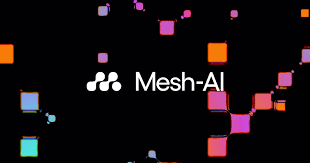
Overview
Major demands are placed on our energy infrastructure from a constantly changing climate, ambitious net zero targets and the complexity of the existing network. One of the key areas of vulnerability is extreme weather events; both isolated disasters such as flooding and events that occur over time such as land shift.
To date, work has been done to predict and prepare for a number of the larger disaster types in isolation, but little has been done to understand how these events affect each other and indeed predict their likelihood and location.
Our solution makes predictions about mtuli-hazard events more actionable, by connecting these events to the details of the network itself. Understanding attributes such as proximity, customers impacted, grid capacity, asset health allows for a more proactive response and identifies the necessary actions to avoid disruption.
Integrated digital twin
Our solution brings together publicly available & first party datasets, harnessing modern AI techniques for an integrated digital twin & risk solution.
Monitored Data Ingestion Pipelines source and ingest from public systems of record with valuable data accessed via API’s where possible. Data Quality checks maintain accuracy and completeness of data in-line with Ofgem data management standards. Whilst MLOps tooling governs model lifecycle processes, BI tooling is used for standard reporting and analytics needs. API & Open Connectivity Layer provides connectivity for colleagues to access data products in a secure, yet open by design method. Multi-Hazard Cloud Data Platform provides a resilient and scalable solution for hosting valuable and self-describing data products that are aligned to multi-hazard weather event reporting and simulation needs. Data Products are hosted on the data platform and are discoverable in the data catalogue. These can be found through keywords, popularity ranking and other helpful filtering and recommendation options. Data Catalogue provides an Amazon search experience for easy to find datasets and data products which are governed through metadata management. Knowledge Graph combines structured and unstructured data to build relationships & patterns and overlay ML & AI to model scenario testing methods. Digital Products built around the specific business requirement, allows us to extract value from highly complex components and data.
AI/ML Models for Multi Weather Hazard Prediction
A number of AI/ML based models are developed and deployed to utilise existing knowledge and data whilst incrementally building an operational digital twin solution.
Capture Existing Knowledge
- Casual Models: These are models that capture both statistical and deep human knowledge on the causes of weather events and how they relate, implementable in the graph.
- Single Event Models: Utilising existing or training new models that predict hazard events. Looking at historic actuals or predicted event types allow us to understand and uncover relationship between events
Augment Existing Knowledge
- HazardGPT: Building a quick accessible chat interface, based on train LLM to access wealth of historic weather & network information to rapidly validate hypothesis and provide context.
- Weak Supervision: Is a paradigm in machine learning that allows us to train algorithms on human knowledge alongside labelled data. “Human in the Loop” based prediction.
Extract New Knowledge
- Causal Probabilistic spatial-temporal fusion transformers: True, multi-Hazard level model, trained on a variety of data types from the past (Temporal, event, visual, numeric etc) to predict outcomes.
- Bayesian Networks: Taking all possible interactions or events/hazards we can create a probabilistic model to capture conditional probabilities.
Key Outcomes: Producing a Score with a Risk Framework In order to make this operational digital twin actionable, we need to allocate both likelihood and risk scores to identified multi-hazard weather events. We use underlying data and ML/AI components to form a number of risk scores that will inform proactive intervention management across the network. This will link events and surface probability allowing for more accurate and real time response. Our risk score is made up of 3 components with:
- Probability of Event: likelihood of multi-weather event, proximity to event, extremity of event, timeframe of event.
- Consequence of Event: Impacted grid assets, grid capacity impact, knock-on asset impact, outage impact, environmental impact.
- Criticality of Event: Number of customers limpacts, types of customers, cost of repair, danger to life. Implemented within the digital twin graph based solution, this allows us to identify risks in advance and build AI assisted interventions to prepare or prevent Multi-hazard weather events.
Highlights
- Using AI to predict multi-weather hazard events and how the impact the network.
- Enabling proactive response and prevention interventions for potential multi hazard events.
- Accessible visual insights through a digital twin interface.
Details
Introducing multi-product solutions
You can now purchase comprehensive solutions tailored to use cases and industries.

Pricing
Custom pricing options
How can we make this page better?

Legal
Content disclaimer
Support
Vendor support
- Mesh AI can run the finalised product as a service or self hosted in your environment.
- Mesh AI can provide longer term support and upgrades where required.